Surface Pro 8 review: It’s finally a modern PC
The new Surface Pro 8 is the biggest change to the product since the Surface Pro 3. Indeed, the Pro 3 gave us Surface as we know it today. It was the first time we saw the modern Surface Connect port, the first time the pen used N-Trig, and the first time it came with a 3:2 display. Aside from a minor bump up to 12.3 inches with the Surface Pro 4, and the addition of USB Type-C with the Surface Pro 7, not much has changed since 2014.
Now, the product has been redesigned. It has a bigger 13-inch screen with narrow bezels, and it uses a new Slim Pen 2 that’s stored in the keyboard. It’s also made out of aluminum, rather than the more traditional magnesium. Finally, it feels like the Intel-powered Surface Pro is a modern product.
Navigate this review:
- Design: The Surface Pro 8 looks a lot more like the Surface Pro X, and that’s a good thing
- Display: Finally, the Intel-powered Surface Pro has narrow bezels
- Keyboard: The first new keyboard connector for the Surface Pro, ever
- Slim Pen 2: Writing on the it feels like writing on paper
- Performance: The Surface Pro 8 comes with Intel 11th-gen processors
- Thunderbolt 4: You can attach an external GPU to your Surface Pro 8
- Price: It costs a lot more than its predecessors
- Conclusion: Should you buy the Surface Pro 8?
Surface Pro 8 Specs
| CPU | Quad-core 11th Gen Intel Core i7-1185G7 Processor, designed on the Intel Evo platform |
|---|---|
| Graphics | Intel Iris Xe |
| Body | 11.3 in x 8.2 in x 0.37 in (287mm x 208mm x 9.3mm), 1.96 lb (891 g) |
| Display | Screen: 13” PixelSense Flow Display Resolution: 2880 x 1920 (267 PPI) Up to 120Hz refresh rate (60Hz default) Aspect ratio: 3:2 Touch: 10 point multi-touch GPU Ink Acceleration Dolby Vision support |
| Storage | 256GB removable solid-state drive |
| Memory | 16GB LPDDR4x RAM |
| Keyboard compatibility | Surface Pro Signature Keyboard Surface Pro X Keyboard |
| Pen compatibility | Surface Pro 8 supports Microsoft Pen Protocol (MPP) Surface Pro 8 supports Tactile signals with Surface Slim Pen 2 |
| Battery life | 51.5 WHr, Up to 16 hours of typical device usage |
| Ports | 2 x USB-C with USB 4.0/Thunderbolt 4 3.5mm headphone jack 1 x Surface Connect port Surface Type Cover port Compatible with Surface Dial off-screen interaction |
| Cameras, video, and audio | Windows Hello face authentication camera (front-facing) 5.0MP front-facing camera with 1080p full HD video 10.0MP rear-facing autofocus camera with 1080p HD and 4k video Dual far-field Studio Mics 2W stereo speakers with Dolby Atmos |
| Connectivity | Wi-Fi 6: 802.11ax compatible Bluetooth Wireless 5.1 technology |
| Material | Signature anodized aluminum |
| Color | Graphite |
| Price | $1,599.99 |
These are the specs of the unit that Microsoft supplied for this review. The product starts at $1,099.99 with a Core i5, 8GB RAM, and 128GB of storage. It maxes out with a Core i7, 32GB RAM, and a 1TB SSD for $2,599.99.
There’s also a business model that’s coming in early 2022. That version will offer 4G LTE, and there will be a less expensive Core i3 configuration.
Design: The Surface Pro 8 looks a lot more like the Surface Pro X, and that’s a good thing
If you look at a Surface Pro 8 from the front, it looks like a Surface Pro X. You probably couldn’t even tell the difference. It’s interesting because compared to when the Pro X first launched, Microsoft is really starting to merge these product lines into one ‘Surface Pro’ family.
The Surface Pro 8 finally gives the Pro lineup a modern touch.
The model that Microsoft sent me is the Graphite color. Microsoft has been offering the Surface Pro in Black and Platinum since the Pro 6 (only Platinum from the Pro 3 through Pro 5, and only Black before that), but both shades look a bit different now with the aluminum material. The aluminum build definitely looks prettier.
It’s also heavier though. Magnesium is a much lighter material, which is why it was always used. The Surface Pro 8 weighs over a quarter-pound more than the Pro 7 did, or the Pro X does. Indeed, with the new design, the Pro X is still thinner and fanless. That’s why the Surface Pro 8 looks more like a combination of a Pro 7 and a Pro X, because you’ll still see the opening around the edges for a fan. It’s just 0.04 inches thicker than a Pro 7, but it’s 0.09 inches thicker than the Pro X.
If you lift up the kickstand, you’ll find a panel that you can remove to replace the storage. Removable storage is a big deal, not just because you can get cheaper upgrades. It’s a big deal for businesses with sensitive data. Some need to destroy the data when recycling the PC, and some just need to remove it in order to have it serviced. This feature was present in the Surface Pro 7+, and originated in the Surface Pro X and Surface Laptop 3.
One thing you won’t find under the kickstand is microSD expansion. In fact, Microsoft has finally cut back on ports. In the old days when Apple was looking toward the future and adopting Thunderbolt 3 before anyone else, Microsoft was bragging about including USB Type-A on its tablets, and refusing to put any kind of USB Type-C on its Surface devices. Times have changed.
The Surface Pro 8 is the biggest upgrade since the Pro 3.
Microsoft keeps the volume rocker on the left side at the top, but that’s about it. Even the power button is on the right side.
It’s about time that the Surface Pro got a proper redesign. The Surface Pro 8 is the biggest redesign since the Surface Pro 3. Before that, we had this weird 10-inch tablet that was too small to be used as a laptop and too thick and heavy to be used as a tablet. It was the beginning of something though, and the Pro 3 is where that idea got refined. But Microsoft stuck with that design for five generations, to where the Surface Pro 7 looked antiquated when it came out. Now, the Surface Pro 8 finally gives the Pro lineup a modern touch.
Display: Finally, the Intel-powered Surface Pro has narrow bezels
Like I said, the Surface Pro 8 looks just like a Surface Pro X from the front. It’s got a 13-inch screen with a 3:2 aspect ratio, narrow size bezels, and bigger top and bottom bezels. It’s a nice look. Honestly, with previous versions of the product, it had been so long since the bezels had shrunken (2015, to be specific) that they looked so old even on day one.
The resolution is the same at 2,880×1,920, but one thing that’s different is the refresh rate, which is now 120Hz. The higher refresh rate makes for smoother motions and an overall more pleasant experience, something that we’ve been seeing from mobile phones for a few years now. Strangely, it’s turned off by default. The Surface Laptop Studio ships at 120Hz, while the Surface Pro 8 ships at 60Hz.
This is probably to preserve battery life. A small tablet like this just can’t house as big of a battery as a bigger laptop like the Surface Laptop Studio can. Obviously, by turning the refresh rate down to 60Hz, that helps. The solution to this would be Dynamic Refresh Rate, a feature that’s going to be coming in some future firmware update to the product. This would lower the refresh rate when you’re doing things that don’t need it, saving battery automatically while still giving you a boost when it’s useful.
From my testing, it supports 100% sRGB, 77% NTSC, 92% Adobe RGB and 83% P3 color gamut. These scores are pretty good, although they’re mostly a bit lower than the results I got on the Surface Laptop Studio.
Brightness maxes out at about 450 nits with 1,120:1 contrast, both of which are also lower than the Surface Laptop Studio. Lower brightness really isn’t good on product like this because Microsoft uses these really glossy displays, making them harder to use in direct sunlight. It’s important to compensate with a bright screen.
The larger top bezel houses a 5MP webcam that can record 1080p 30fps video, along with an IR camera. It’s a really good webcam, and Microsoft should be commended for this. The company started using a 5MP webcam with the Surface Pro 3, something that very few vendors were doing back in 2014. Now, it’s way ahead of the curve in this age of working from home.
Keyboard: The first new keyboard connector for the Surface Pro, ever
When Microsoft changed the size and aspect ratio with the Surface Pro 3, you could still use the original Type Cover. It didn’t fully cover the device, but you could use it. For the first time, the Surface Pro is getting an all-new keyboard connector.
This is actually a pretty big deal. Part of the reason that there’s been so little change to the product over the years has been to maintain compatibility with peripherals. In fact, to maintain that compatibility for businesses, Microsoft is still selling the Surface Pro 7+; it’s actually why the 7+ exists.
This is actually the same Surface Keyboard (don’t call it a Type Cover) that was used on the Surface Pro X. No, it still doesn’t come with the device, but you can buy a bundle that includes the new Slim Pen 2. As you can see, the keyboard has a pen garage, so there’s no more magnetically attaching the pen to the side of the device and having it fall off in your bag. It’s a big improvement.
The keyboard itself is fine. It’s backlit, as it’s been since the Type Cover 2 that shipped alongside the Surface Pro 2. The real pain point for me is the touchpad; I just can’t stand it. I complained about this back when I reviewed the original Surface Pro X as well, but it’s just so loud. There is legitimately no way to press on this touchpad without making a noise that’s loud enough to be embarrassing in a quiet room. Seriously, I know it’s hard to believe that if you apply as little pressure as possible, it will still make a loud noise, but it’s true.
Slim Pen 2: Writing on it feels like writing on paper
The pen to use with the Surface Pro 8 is the all-new Slim Pen 2, although you can use any pen Microsoft has ever made since the Pro 3, along with a variety of third-party options. What’s cool about the Slim Pen 2, however, is that it provides haptic feedback that makes it feel like writing on actual paper.
The Slim Pen 2 is a game-changer, and this is coming from someone who has used a lot of PCs with a lot of pens. It feels a lot more natural. Another fun thing is that if you start writing in a supported app and drag the pen outside of the writing area, you’ll immediately feel the difference when the haptics stop responding.
You read that right though. You do need a supported app, and that includes things like Microsoft Whiteboard, Adobe Fresco, LiquidText, Shapr3D, and Sketchable. Unfortunately, at this time, it does not include OneNote, the app that I use for inking the most. It’s disappointing to see Microsoft not supporting with many of its own apps like this, because it’s not just OneNote. So many apps in Windows have been designed to take advantage of inking features, such as Photos, Maps, Edge, and more.
I do want to reiterate how much I love the feature though. Hopefully, we’ll see more app support as time goes on, and perhaps we’ll see third-party hardware makers adopt this technology in their own pens. Support should be coming to the Surface Duo 2 as well (not at launch), so hopefully we’ll see Android app support too.
Performance: The Surface Pro 8 comes with Intel 11th-gen processors
You might not realize this, but the Surface Pro 7 is actually two years old. There was a minor refresh with the Pro 7+, and that added Intel 11th-generation processors. But if you were a regular old consumer buying a brand-new Surface Pro 7, you’d still get 10th-gen chips.
Now, you can once again get the latest and great performance on a Surface Pro, and it’s really good. I don’t actually want to get too deep into it, because I’ve reviewed dozens of PCs with Tiger Lake U processors by now. Indeed, the Surface Pro is pretty much the last premium PC to still be using last-gen hardware. Of course, Microsoft is also the only OEM that doesn’t make it a priority to always be on the latest from Intel.
The Surface Pro 8 is Microsoft's first Intel Evo certified PC, and it makes a difference.
And with Thunderbolt 4, that makes this Microsoft’s very first Intel Evo certified PC. And to be clear, while the Evo brand is exclusive to 11th-gen processors, the company never had any Athena devices either. It’s because Microsoft always refused to use modern technologies like Thunderbolt.
For benchmarks, I used PCMark 8, PCMark 10, 3DMark, Geekbench, and Cinebench.
| Surface Pro 8 Core i7-1185G7 |
Surface Pro 7 Core i5-1035G4 |
Dell XPS 13 9300 Core i7-1065G7 |
|
|---|---|---|---|
| PCMark 8: Home | 4,029 | 3,376 | 3,795 |
| PCMark 8: Creative | 4,668 | 3,749 | 4,194 |
| PCMark 8: Work | 3,627 | 3,339 | 3,723 |
| PCMark 10 | 4,988 | 4,030 | 4,441 |
| 3DMark: Time Spy | 1,852 | 689 | |
| Geekbench | 1,431 / 5,505 | 1,085 / 4,053 | |
| Cinebench | 1,438 / 5,423 | 661 / 2,271 |
Like I said, this isn’t worth going too deep into. Just know that Intel’s 11th-gen processors are a big step over 10th-gen, which were also a big step up over 8th-gen.
As far as battery life goes, it’s about what I expect for a Surface Pro, which is to say, it’s not great. The best I could do was five hours (four hours 56 minutes, to be specific), and that was doing regular work with the battery set to recommended settings, and screen brightness at medium. It didn’t vary much though.
Thunderbolt 4: You can attach an external GPU to your Surface Pro 8
Now, it’s time to talk about Thunderbolt 4, which has finally made its way into a Surface PC. This is a big deal, and it’s something that I always think is cool for a tablet like this. It means that you can take this sub-two-pound tablet around with you, and then bring it home and turn it into what essentially adds up to a desktop PC.
As you can see from the image above, I totally went there. I connected an external GPU and cranked up the graphics settings on games like Forza Horizon 4. It’s pretty cool. The thing is, the CPU doesn’t really keep up when you go that high. The Surface Pro 8 gets really hot. Still, the graphics power is there. I’d just be more inclined to use this for GPU acceleration in Premiere Pro instead of gaming. Like I said earlier, I really think that the best gaming experience comes through Xbox Cloud Gaming.
Thunderbolt 4 can turn the Surface Pro 8 into a gaming powerhouse.
Price: It costs a lot more than its predecessors
The Surface Pro lineup is Microsoft’s most successful line of PCs ever. When the company set out to establish this new category, this is the one that succeeded. It’s the one that entered the market at a time when people were deciding between buying a new laptop or an iPad. The tablet PC form factor is definitely the most imitated of Microsoft’s designs as well.
I remember buying the original Surface Pro from a pop-up Microsoft Store in my local mall. It was $899 for the 64GB model and $999 for the 128GB model (those were the only configurations). The price has gone down from there. For most of the Surface Pro 7’s life, you could get one starting at $699 on the Microsoft Store. Now that the Surface Pro 8 is out, it currently starts at $549.
The Surface Pro 8 starts at $1,099, the highest starting price for any Surface Pro, Intel or Qualcomm, ever. Keep in mind that it starts with a Core i5 and 8GB RAM, while the Surface Pro 7 starts with a Core i3 and 4GB RAM. While it’s nice to see the 4GB RAM option disappear, I’m a bit surprised to see no Core i3 variant, especially since the business model is going to have a Core i3 offering. That means that unless something changes, the Surface Pro 8 for Business will likely have a lower entry price point than the consumer model.
Microsoft isn’t shy about it either. I asked about the price hike on its most popular Surface, and was told that the Surface Pro does have a starting point of $899, and that’s the new Wi-Fi only model of the Surface Pro X. This is another example of bringing the two products in alignment with each other. It’s clear now that this is one Surface Pro family, rather than two separate products with similar names.
Conclusion: Should you buy the Surface Pro 8?
If you’re wondering whether or not you should buy the Surface Pro 8, just ask yourself if you want the tablet form factor with an attachable keyboard. That’s what this comes down to. It’s kind of like how with the Surface Book, the product made zero sense unless you knew you were going to use it with the display detached. The Surface Pro 8 costs $1,099, and that doesn’t include the extra few hundred dollars you’ll be spending on a keyboard and pen. When that bill adds up to over $1,500 with taxes and Microsoft Complete protection, make sure that you’re buying this product for a reason.
The Surface Pro 8 is a fresh take on an aging product lineup.
The Surface Pro 8 is a fresh take on an aging product lineup. It strips away legacy ports, big bezels, and old silicon for powerful features like Thunderbolt 4 and a beautiful, 120Hz display. It keeps the stellar webcam, a must when working from home, and adds the best of the Surface Pro X to the Intel model.
It’s not perfect, of course. By using aluminum instead of magnesium, it’s a quarter-pound heavier than its predecessor, and the touchpad is just so noisy. I’d also like to have seen 4G LTE in the consumer model, like we get from the Pro X, and frankly, we need better app support for the Slim Pen 2, but that should be coming.
While I just shouted out the things it’s lacking, another part of me wonders if this could be the perfect tablet. Windows 11 is going to get Android app support soon, and combined with the versatility of the Windows ecosystem, it might end up being everything that I want. I can use it like it’s a laptop, and then pull off the keyboard and read in the Kindle app. Of course, I’m getting ahead of myself now, as Android app support isn’t even available to Insiders yet.
- The Surface Pro 8 is Microsoft's latest Windows tablet, with the biggest redesign since the Surface Pro 3.
|
Features: |
|
|
|
Pros: Cons: |
The post Surface Pro 8 review: It’s finally a modern PC appeared first on xda-developers.
from xda-developers https://ift.tt/3BfzVTU
via IFTTT

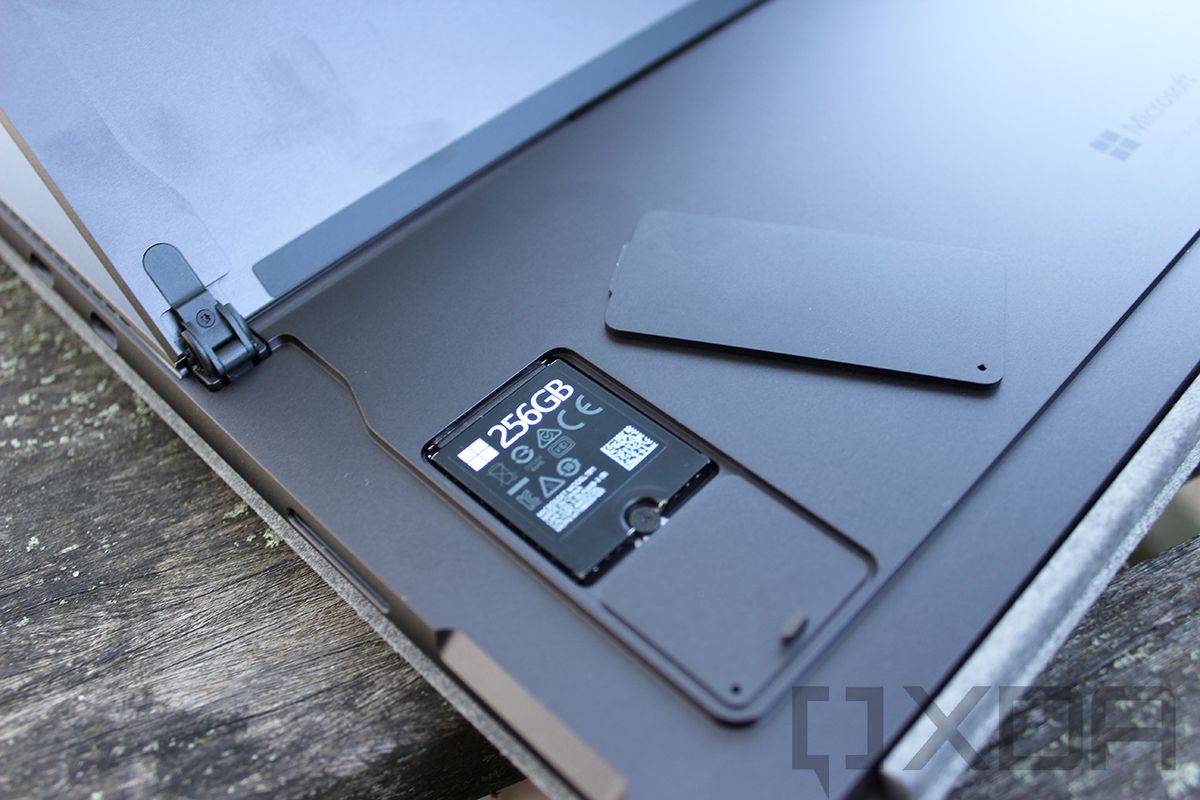
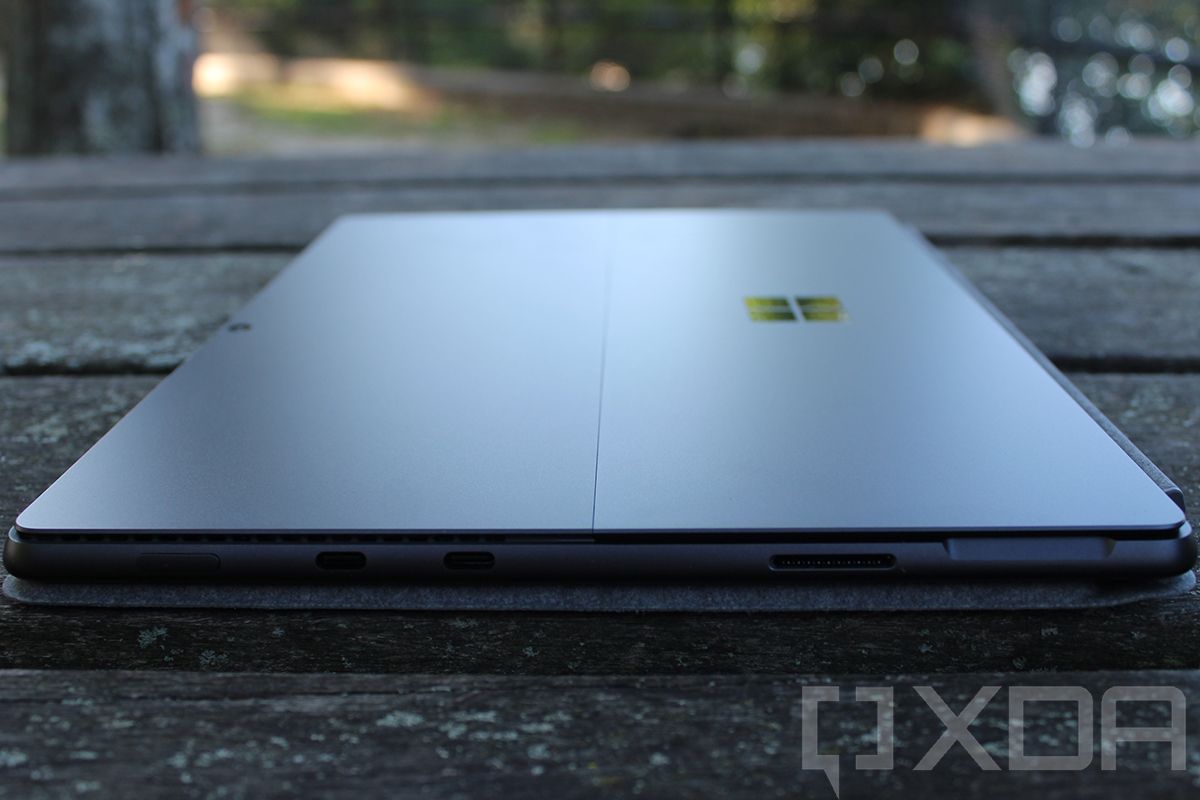
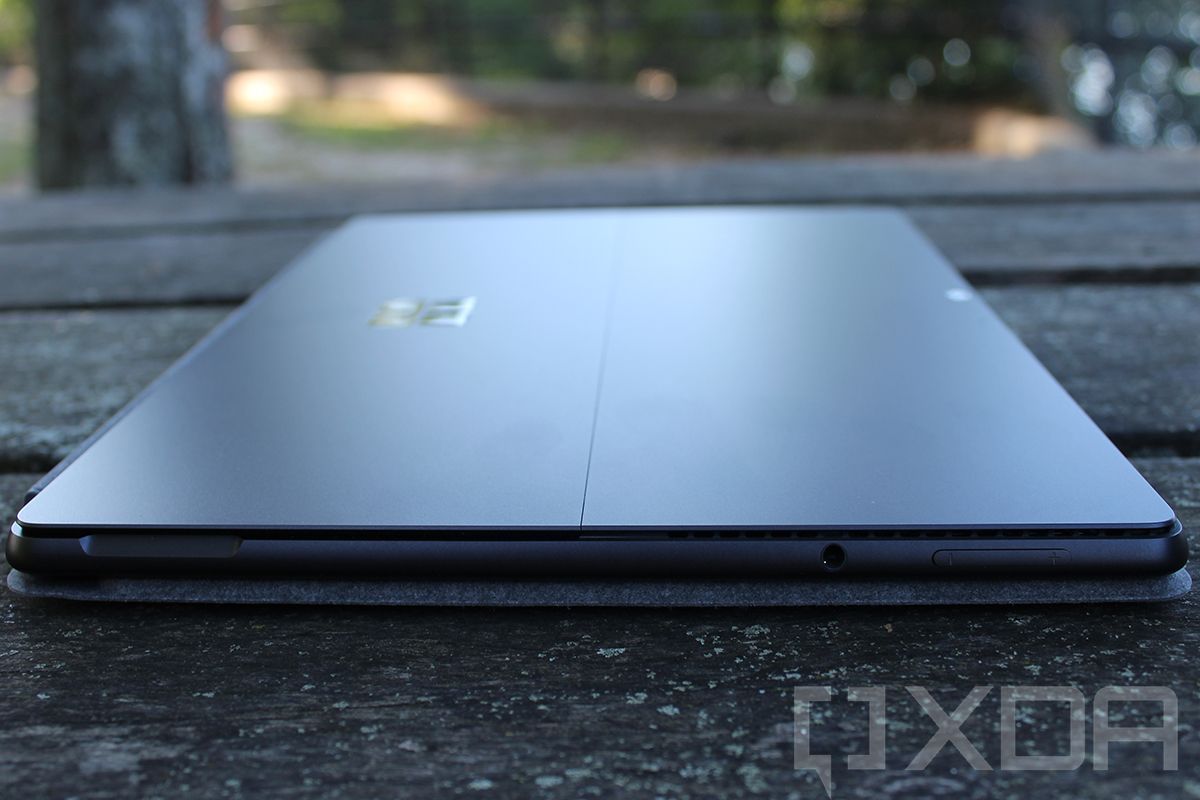
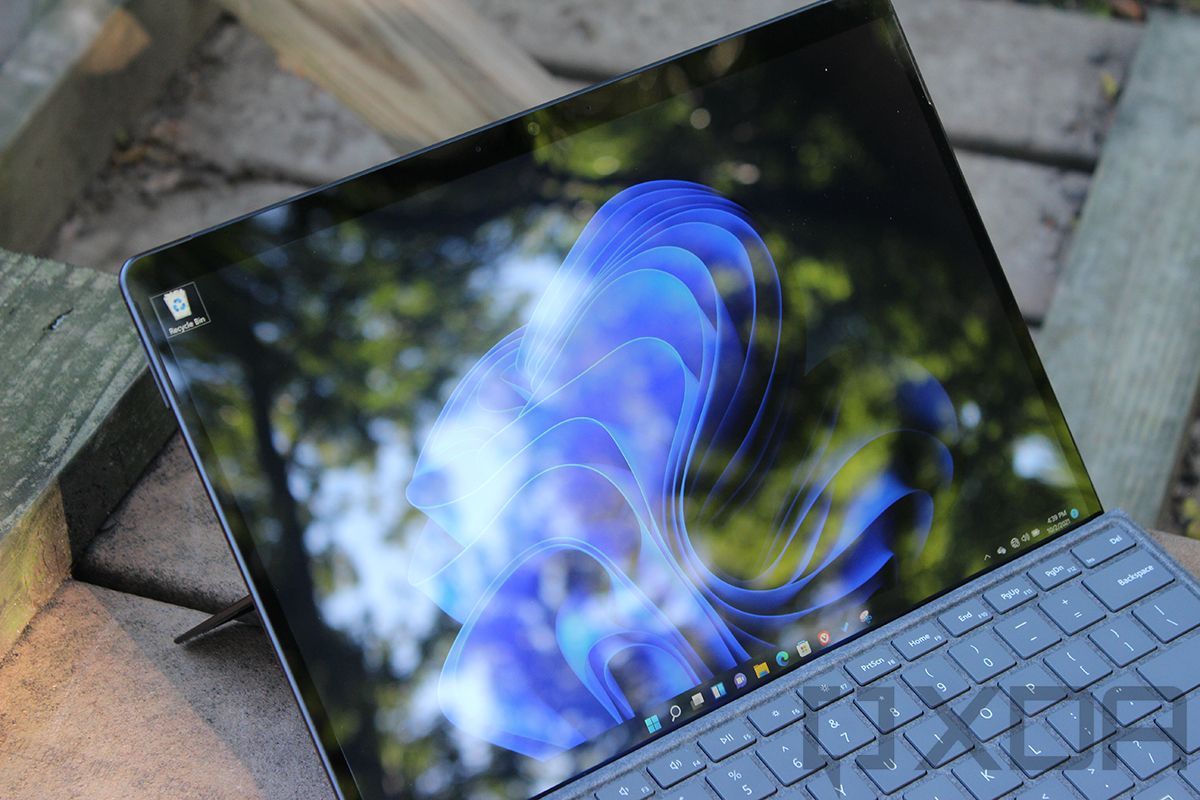



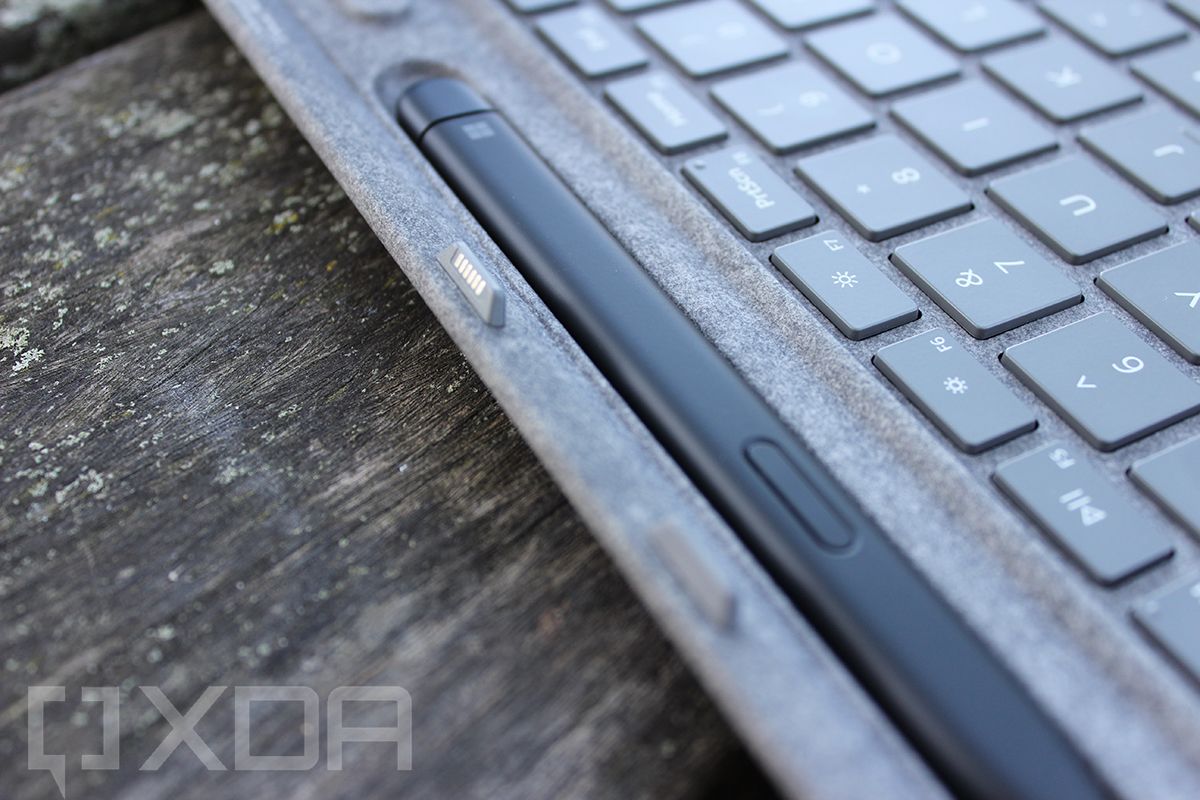
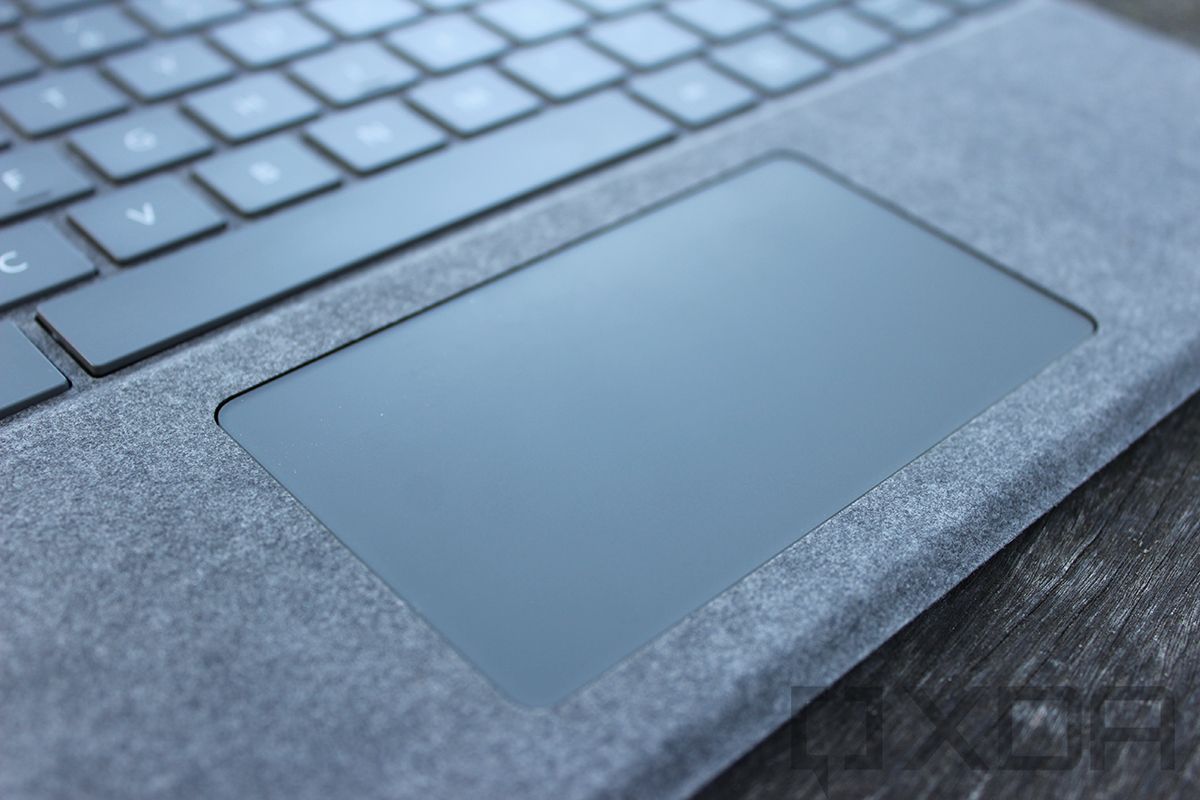

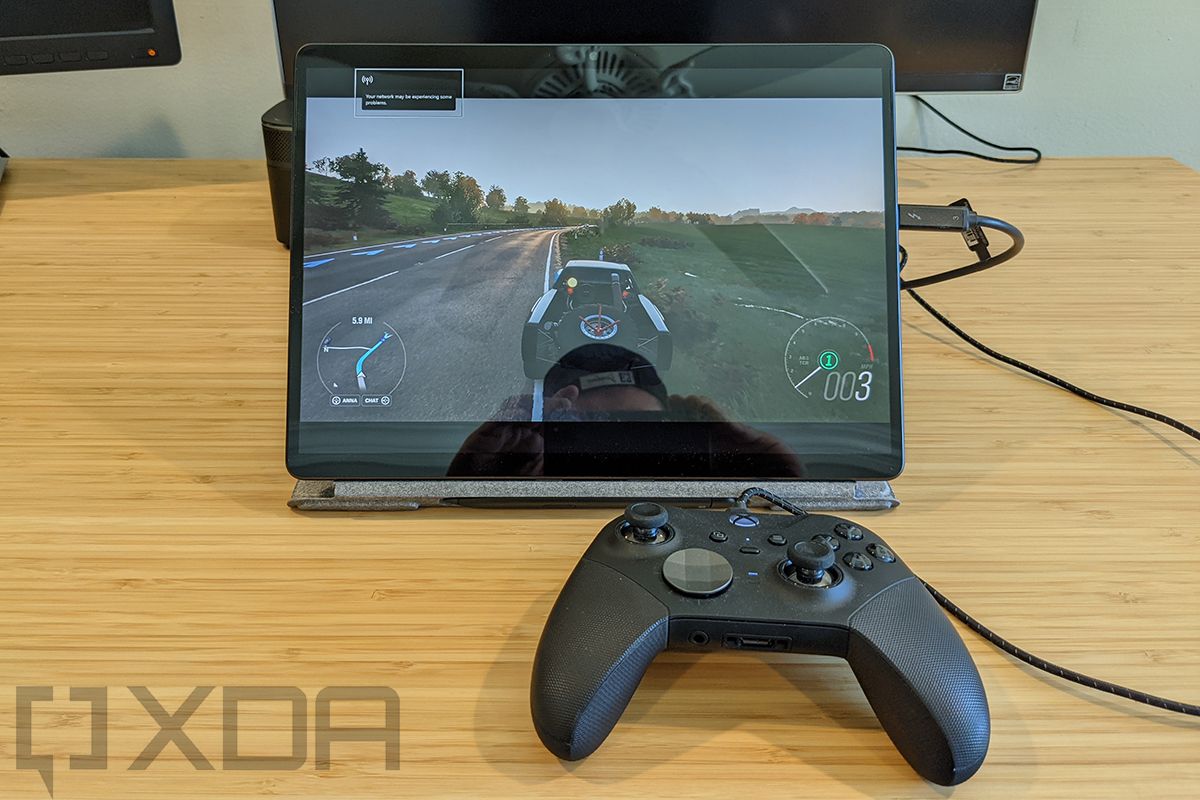
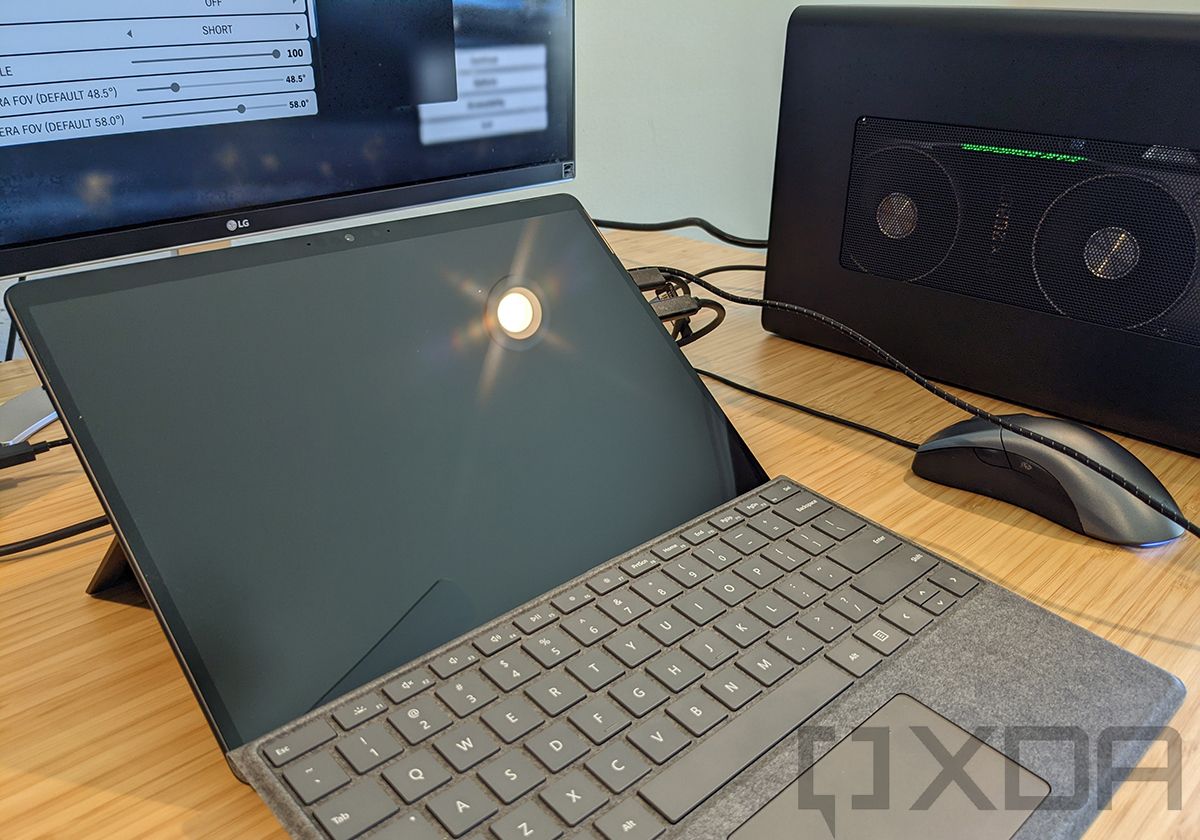
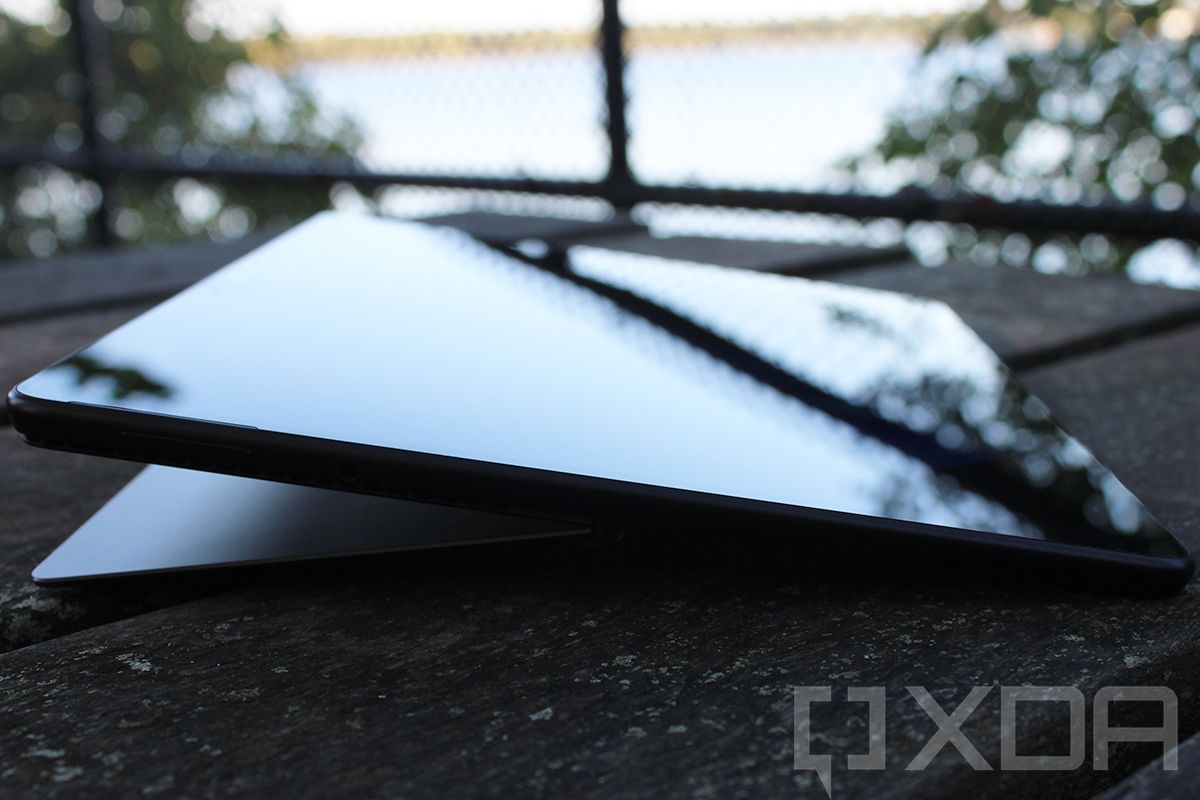


No comments: